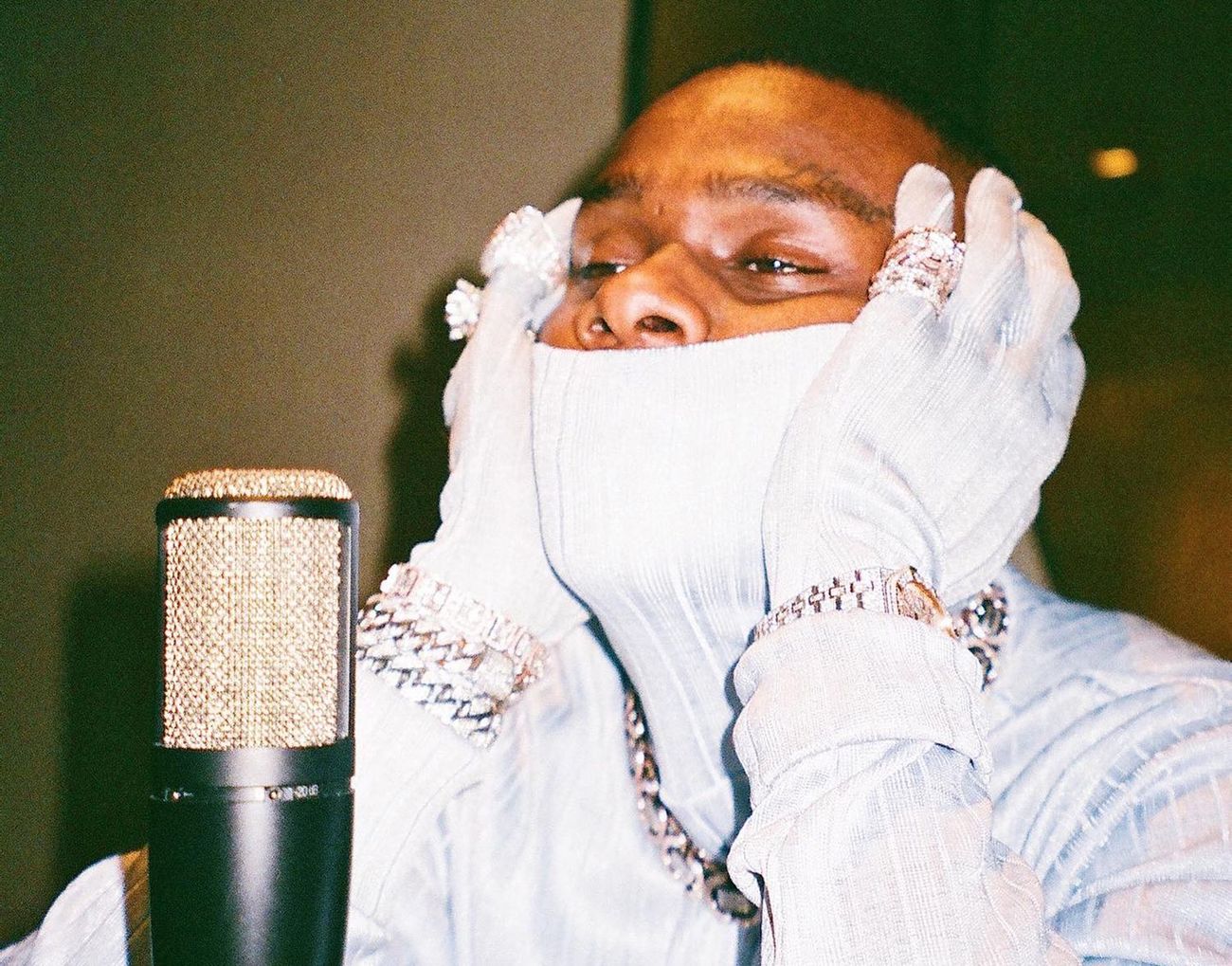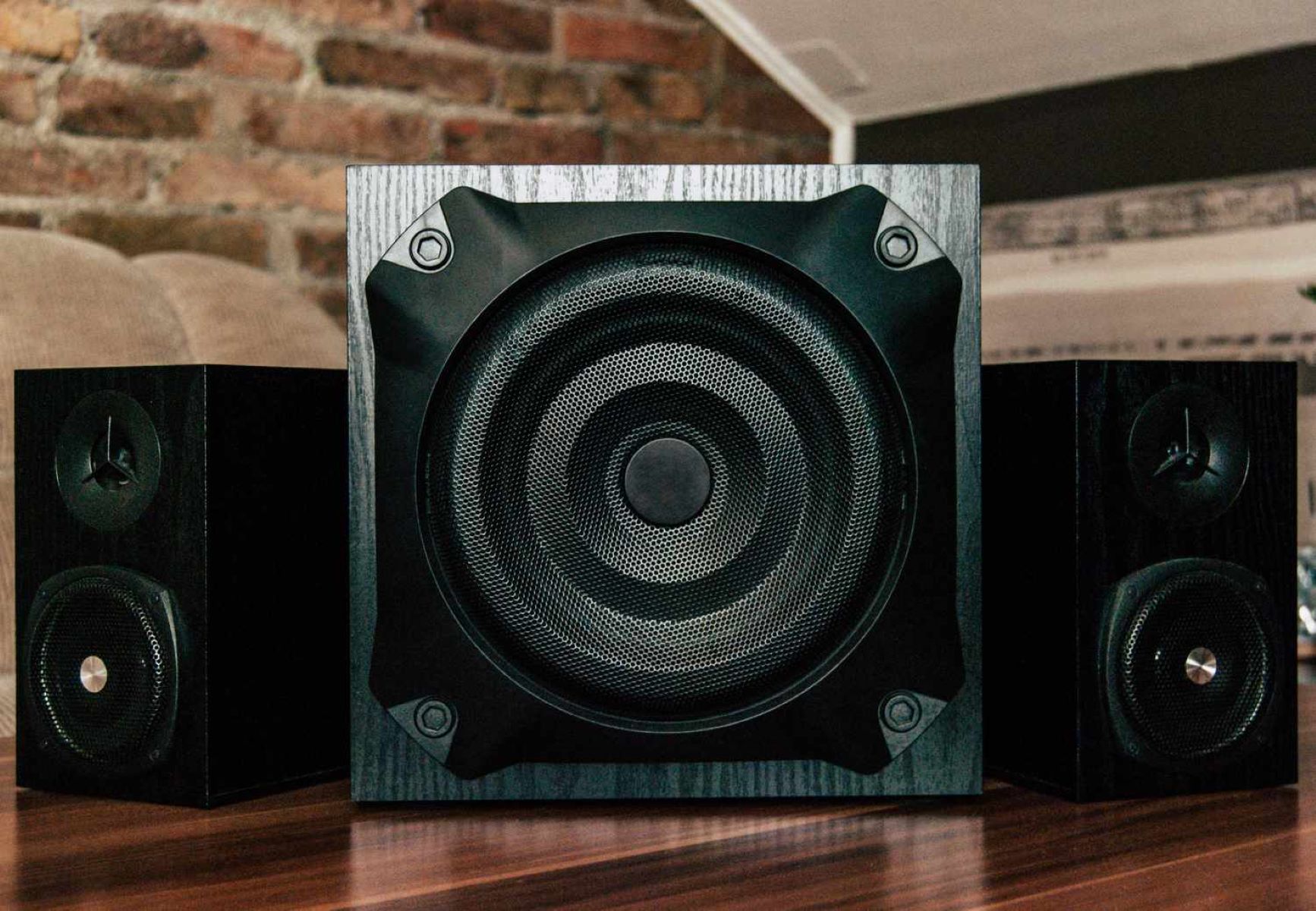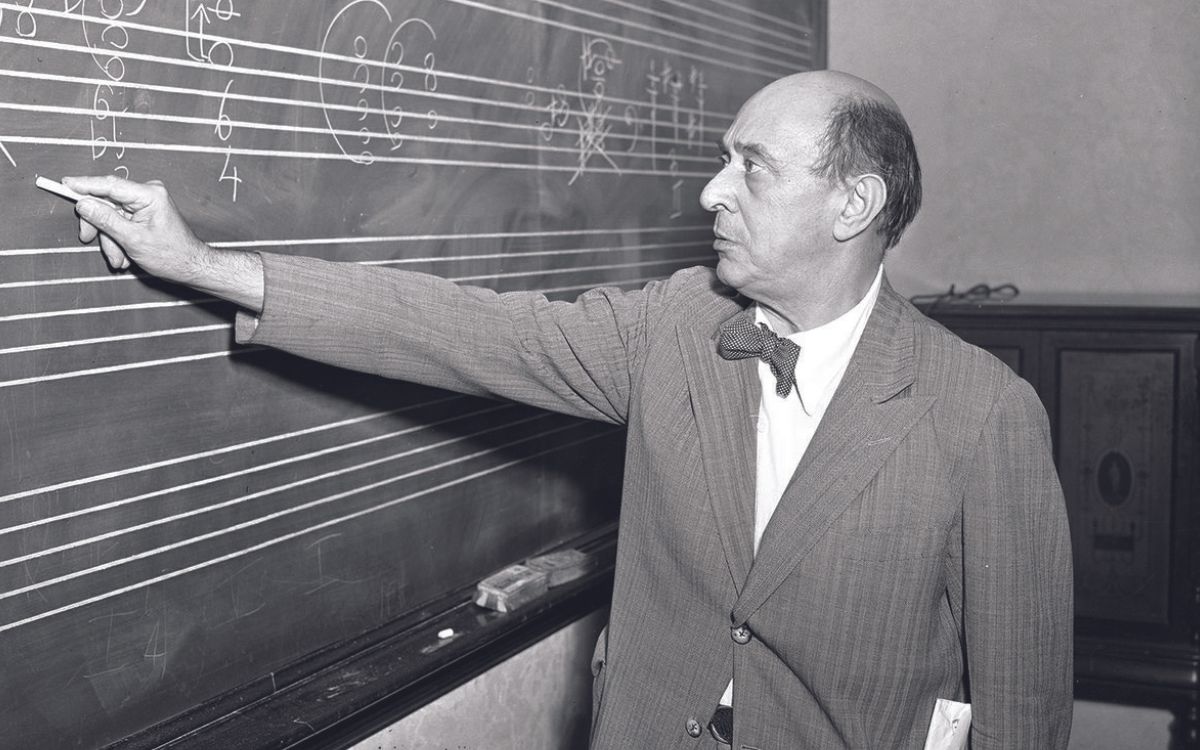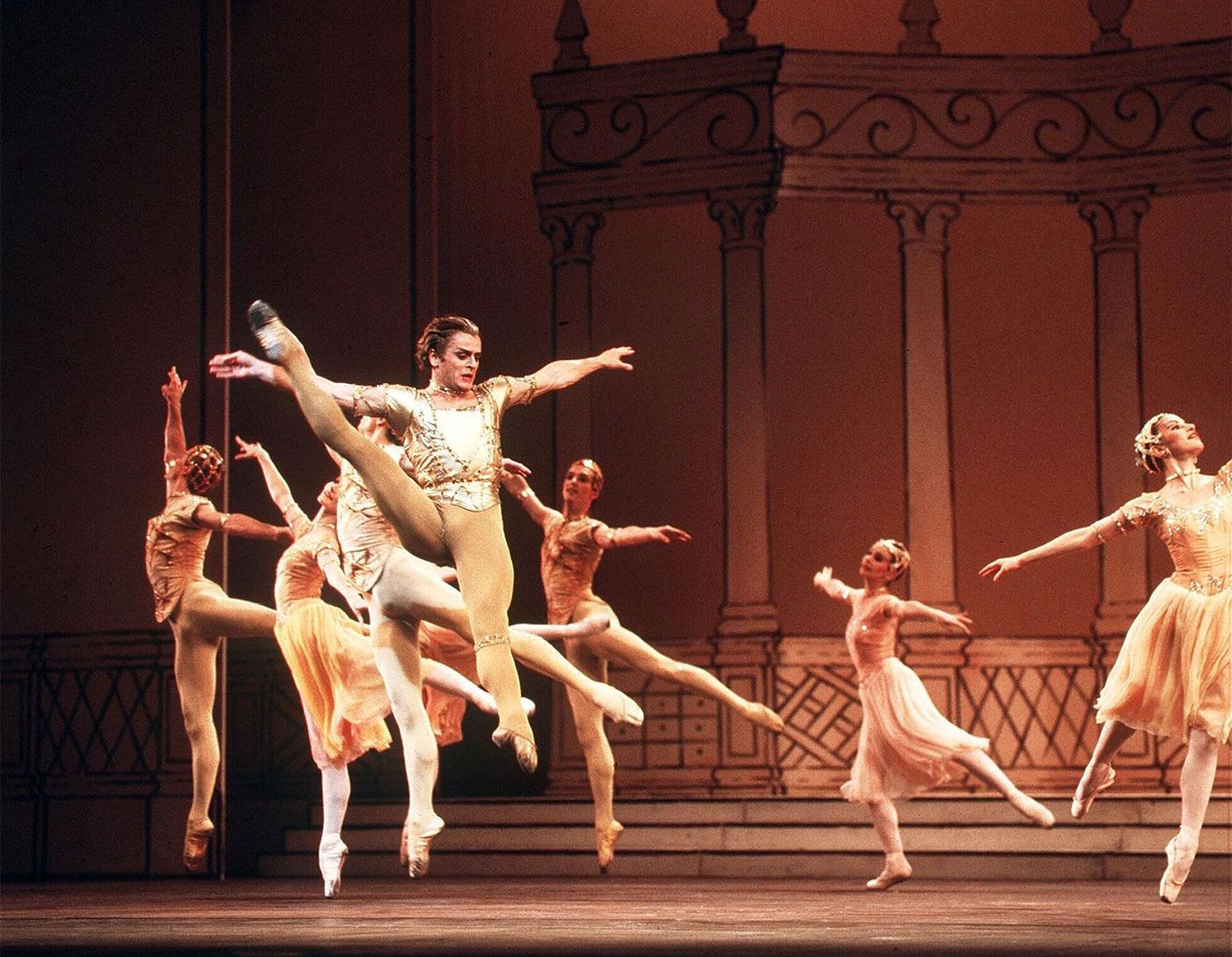Home>Events & Info>Ballet>Stravinskys Life Took A Sudden Turn In 1909 When He Met The Director Of The Russian Ballet


Ballet
Stravinskys Life Took A Sudden Turn In 1909 When He Met The Director Of The Russian Ballet
Modified: January 22, 2024
Discover the remarkable journey of Igor Stravinsky, the renowned composer, when he met the influential director of the Russian Ballet in 1909. Explore his transformative connection to the world of ballet.
(Many of the links in this article redirect to a specific reviewed product. Your purchase of these products through affiliate links helps to generate commission for AudioLover.com, at no extra cost. Learn more)
Table of Contents
- Introduction
- Early Life and Musical Development
- Stravinsky’s Entry into the Russian Ballet World
- Meeting Sergei Diaghilev: A Turning Point in Stravinsky’s Life
- Collaboration with Diaghilev and the Russian Ballet
- The Firebird: A Landmark Collaboration
- Petrushka and The Rite of Spring: Stravinsky’s Revolutionary Contributions
- Strained Relations and End of Collaboration
- Legacy of the Collaboration: Stravinsky’s Influence on Ballet and Music
- Conclusion
Introduction
The world of ballet is often associated with grace, beauty, and the seamless fusion of music and movement. Behind the enchanting performances lies a complex network of artists, composers, and directors who collaborate to bring these magical productions to life. One such collaboration that forever transformed the world of ballet was that between composer Igor Stravinsky and Sergei Diaghilev, the director of the Russian Ballet.
Stravinsky’s life took a sudden turn in 1909 when he met Diaghilev, a visionary and patron of the arts. This encounter marked the beginning of a fruitful collaboration that would revolutionize the ballet world and cement Stravinsky’s legacy as one of the greatest composers of the 20th century.
Throughout his early life, Stravinsky showed immense musical talent and a deep passion for orchestration. He was born in 1882 in Oranienbaum, Russia and studied music under renowned composers such as Nikolai Rimsky-Korsakov. These early experiences laid the foundation for Stravinsky’s musical development and nurtured his unique style that would later captivate audiences.
Stravinsky’s entry into the Russian ballet world came at a pivotal moment in his career. At the time, ballet was undergoing a revival, with innovative choreographers and directors pushing the boundaries of traditional dance. Diaghilev’s Russian Ballet Company played a crucial role in this movement, and with his keen eye for talent, he recognized the potential in Stravinsky’s music.
However, it was not until Stravinsky met Diaghilev that his career truly took off. The two men shared a deep artistic connection and a shared vision for the future of ballet. Under Diaghilev’s guidance, Stravinsky would compose some of his most celebrated ballet scores, including “The Firebird,” “Petrushka,” and “The Rite of Spring.”
This collaboration between Stravinsky and Diaghilev would forever transform the landscape of ballet. Stravinsky’s ingenious compositions, filled with rhythmic complexity and innovative melodies, breathed new life into the art form. His music challenged traditional conventions and pushed the boundaries of what was considered acceptable in ballet.
Early Life and Musical Development
Igor Stravinsky was born on June 17, 1882, in Oranienbaum, Russia. His father was a bass singer at the Mariinsky Theatre in St. Petersburg, and his mother was a skilled pianist. Growing up in a household filled with music, it was only natural that Stravinsky developed a deep appreciation for the art form from a young age.
At the age of nine, Stravinsky began piano lessons, which laid the foundation for his musical journey. He exhibited remarkable talent and soon caught the attention of influential figures in the music world. In 1901, he enrolled at the St. Petersburg Conservatory, where he studied under celebrated composer Nikolai Rimsky-Korsakov.
Under Rimsky-Korsakov’s guidance, Stravinsky honed his compositional skills and developed a deep understanding of orchestration. He absorbed the rich musical traditions of his Russian heritage, while also exploring innovative techniques and styles. Rimsky-Korsakov’s influence on Stravinsky’s early works can be seen in their lush harmonies and colorful orchestrations.
After completing his studies at the St. Petersburg Conservatory in 1905, Stravinsky embarked on his professional career as a composer. He initially composed works in a neoclassical style, drawing inspiration from the likes of Bach, Mozart, and Beethoven. However, it was during his collaboration with Sergei Diaghilev and the Russian Ballet that Stravinsky’s musical style would undergo a dramatic transformation.
Stravinsky’s early works showcased his mastery of traditional compositional techniques, but his true artistic breakthrough came with his association with Diaghilev. The collaboration allowed him to experiment with new sounds and harmonies, breaking free from the constraints of traditional forms.
Stravinsky’s unique musical language began to emerge, characterized by unconventional rhythms, dissonant harmonies, and expansive orchestrations. His music was a bold departure from the Romantic tradition, embracing a new era of modernism in classical music.
As Stravinsky’s reputation as a composer grew, he became known for his ability to infuse his works with emotional depth and intricate musical structures. His compositions were innovative, often challenging listeners with their complexity and pushing the boundaries of what was considered acceptable in the realm of classical music.
It is important to note that while Stravinsky is primarily recognized for his collaborations with the Russian Ballet, his contributions to music extend beyond the realm of ballet. He composed a diverse range of works, including symphonies, operas, chamber music, and choral compositions, all of which showcase his unique musical voice.
Stravinsky’s Entry into the Russian Ballet World
At the turn of the 20th century, the world of ballet was undergoing a transformative period. Sergei Diaghilev, a Russian impresario, was at the forefront of this movement, seeking to revitalize ballet by bringing together talented artists from various disciplines. It was during this vibrant era that Igor Stravinsky, already an accomplished composer, made his entry into the Russian ballet world.
In 1909, Diaghilev, impressed by Stravinsky’s early compositions, invited him to collaborate on creating music for the ballet. This invitation marked a significant turning point in Stravinsky’s career and would forever shape the trajectory of both his musical genius and the world of ballet.
Stravinsky’s first opportunity to work with the Russian Ballet came in 1909 with the ballet “Les Sylphides.” This collaboration served as a stepping stone for Stravinsky, allowing him to showcase his unique musical style and earn acclaim as a talented composer in the ballet world.
Diaghilev recognized Stravinsky’s exceptional talent and the potential for innovation in his music. The impresario saw the opportunity to push the boundaries of traditional ballet by combining it with Stravinsky’s avant-garde compositions. This vision laid the foundation for the groundbreaking collaboration that would follow.
Stravinsky’s entry into the Russian ballet world not only introduced his music to a broader audience but also exposed him to the wealth of creativity and talent within the ballet community. Working alongside renowned choreographers, dancers, and designers, Stravinsky was inspired by their artistry and incorporated their ideas into his compositions.
This collaboration allowed Stravinsky to learn the intricacies of ballet and the requirements of music in a dance context. He developed a deep understanding of the relationship between movement and music, striving to create compositions that not only complemented the choreography but also enhanced the emotional impact of the performances.
Working in the Russian Ballet world provided Stravinsky with unique opportunities to experiment with his musical language. Diaghilev encouraged him to push the boundaries of traditional composition, embrace dissonance, rhythmical complexities, and unexpected harmonic structures.
Stravinsky’s entry into the Russian ballet world marked a pivotal moment in both his career and the world of ballet. The collaboration with Diaghilev and the innovative spirit of the Russian Ballet allowed Stravinsky to revolutionize the relationship between music and dance, forever altering the landscape of both art forms.
Meeting Sergei Diaghilev: A Turning Point in Stravinsky’s Life
In 1909, Igor Stravinsky’s life took a momentous turn when he had the opportunity to meet Sergei Diaghilev, the influential director of the Russian Ballet. This fateful encounter would prove to be a turning point in Stravinsky’s career and set in motion a creative partnership that would revolutionize the world of ballet.
Sergei Diaghilev was a visionary impresario who sought to transform the world of ballet by bringing together talented individuals from various artistic disciplines. When Diaghilev recognized Stravinsky’s exceptional musical talent, he saw an opportunity to collaborate and push the boundaries of traditional ballet by incorporating Stravinsky’s innovative compositions.
The meeting between Stravinsky and Diaghilev was fortuitous, as Stravinsky was already gaining recognition as a young and promising composer. Diaghilev, known for his keen eye for talent, was captivated by Stravinsky’s compositions and saw the potential for their fusion with the art of ballet.
Both Stravinsky and Diaghilev shared a deep passion for pushing artistic boundaries and challenging conventional norms. This shared vision sparked an immediate connection between the two, laying the foundation for their subsequent collaboration.
Diaghilev introduced Stravinsky to a world of creativity and inspiration within the Russian Ballet company. The collaboration allowed Stravinsky to immerse himself in the world of dance, working closely with choreographers, dancers, and other artists involved in the productions.
Under Diaghilev’s guidance, Stravinsky found the perfect avenue to explore his innovative musical ideas. Diaghilev encouraged Stravinsky to break free from the constraints of traditional forms and embrace new sounds, harmonies, and rhythmic complexities in his compositions.
One of the most notable outcomes of their collaboration was the ballet “The Firebird,” which premiered in 1910. This critically acclaimed production showcased Stravinsky’s unique musical style and marked a departure from traditional ballet music. The combination of Stravinsky’s evocative score and the visionary choreography by Michel Fokine captivated audiences and solidified their partnership.
The success of “The Firebird” was followed by further collaborations, including “Petrushka” and “The Rite of Spring,” both of which pushed the boundaries of music and dance even further. Stravinsky’s innovative compositions, characterized by daring rhythms, dissonant harmonies, and unexpected orchestrations, revolutionized the ballet world and established him as a leading figure in the early 20th-century avant-garde movement.
The meeting of Igor Stravinsky and Sergei Diaghilev was a pivotal moment in Stravinsky’s life. Their collaboration allowed Stravinsky to fully explore his creative potential and blurred the lines between music and dance. The partnership became a catalyst for innovation and ushered in a new era of artistic expression, forever transforming the landscape of ballet and establishing Stravinsky as a trailblazer in the world of music.
Collaboration with Diaghilev and the Russian Ballet
The collaboration between Igor Stravinsky and Sergei Diaghilev, the director of the Russian Ballet, was a creative partnership that would leave an indelible mark on both artists and the world of ballet. Their collaboration spanned several years and produced some of the most groundbreaking and influential works in the history of dance and music.
Working together, Stravinsky and Diaghilev sought to challenge the conventions of ballet and create performances that were not only visually stunning but also musically innovative. Their goal was to fuse the power of movement with the power of music, creating a harmonious and transformative experience for the audience.
From the start, the collaboration between Stravinsky and Diaghilev was marked by a deep artistic connection and shared vision. Diaghilev recognized Stravinsky’s talent and his ability to push the boundaries of traditional composition, and Stravinsky found in Diaghilev a kindred spirit who understood and supported his artistic ambitions.
Their collaboration resulted in a series of groundbreaking ballets, each a testament to their shared pursuit of artistic excellence. “The Firebird,” which premiered in 1910, was the first of these collaborations and garnered immediate success. The ballet showcased Stravinsky’s inventive use of orchestration and harmonies, complemented by the revolutionary choreography of Michel Fokine.
The success of “The Firebird” was followed by “Petrushka” in 1911, which expanded upon the innovations of its predecessor. Stravinsky’s imaginative and rhythmic score brought to life the story of the mischievous puppet and captivated audiences with its fresh and daring compositions.
However, it was with “The Rite of Spring,” premiered in 1913, that the collaboration between Stravinsky and Diaghilev truly pushed the boundaries of both music and dance. The avant-garde nature of Stravinsky’s score, with its primitive rhythms and dissonant harmonies, challenged the audience’s expectations and ignited a riot at its Paris premiere.
The collaboration between Stravinsky and Diaghilev was not without its challenges. Creative differences and clashes of ego occasionally strained their relationship. Despite these conflicts, it is undeniable that their collaboration propelled both artists to new heights and revolutionized the art of ballet.
Together, Stravinsky and Diaghilev were able to redefine the possibilities of dance and music, pushing the boundaries of traditional storytelling and structure. They created performances that were not only entertaining but also intellectually and emotionally stimulating, leaving a lasting impact on audiences and artists alike.
Their collaboration was a testament to the power of artistic partnerships, where the talents and visions of two remarkable individuals merged to create something truly extraordinary. The legacy of their collaboration lives on in the continued exploration of the intersection between music and dance, and their works remain timeless masterpieces in the world of ballet.
The Firebird: A Landmark Collaboration
One of the most significant collaborations between Igor Stravinsky and Sergei Diaghilev was the ballet “The Firebird,” which premiered in 1910. This groundbreaking production marked a turning point in both their careers and revolutionized the world of ballet.
The creation of “The Firebird” brought together the visionary compositions of Stravinsky with the innovative choreography of Michel Fokine. The ballet tells the enchanting story of Prince Ivan’s encounter with the magical Firebird and his quest to rescue a captive princess.
Stravinsky’s score for “The Firebird” was a revelation in the ballet world. It showcased his distinctive musical style, blending elements of Russian folk music with bold harmonic choices and intricate orchestrations. The score seamlessly combined melodic beauty with rhythmic complexity, capturing the essence of the story and delivering an emotional impact that resonated with audiences.
Fokine’s choreography brilliantly complemented Stravinsky’s music, creating a visual feast for the eyes. Through a combination of expressive movements and striking formations, Fokine brought the mythical characters to life on stage. The collaboration between Stravinsky and Fokine was a perfect harmony of music and dance, each enhancing the other to create a truly immersive and captivating experience.
The success of “The Firebird” was nothing short of extraordinary. Audiences were captivated by the combination of Stravinsky’s innovative compositions and Fokine’s imaginative storytelling through dance. The ballet’s premiere received high praise, solidifying Stravinsky’s reputation as a leading composer in the ballet world.
With “The Firebird,” Stravinsky and Diaghilev demonstrated their commitment to pushing the boundaries of traditional ballet. The collaboration challenged conventions, both musically and dramatically, and brought a new level of sophistication to the art form.
Furthermore, “The Firebird” paved the way for future collaborations between Stravinsky and the Russian Ballet. It established a creative chemistry that would be further explored in subsequent ballets such as “Petrushka” and “The Rite of Spring.”
Even to this day, “The Firebird” remains a landmark collaboration, remembered as a groundbreaking work that forever altered the trajectory of ballet and music. Stravinsky’s score continues to be celebrated for its inventiveness and its ability to capture the imagination of audiences. Fokine’s choreography, too, remains influential, inspiring countless choreographers to experiment with new movements and storytelling techniques.
The success of “The Firebird” solidified Stravinsky’s position as a pioneering composer, paving the way for his future contributions to the ballet world and his lasting impact on the landscape of classical music.
The legacy of the collaboration between Stravinsky, Diaghilev, and Fokine lives on in the continued performances and adaptations of “The Firebird.” It stands as a testament to the power of artistic collaboration and the ability to push the boundaries of creativity to create something truly remarkable.
Petrushka and The Rite of Spring: Stravinsky’s Revolutionary Contributions
Following the groundbreaking success of “The Firebird,” Igor Stravinsky continued his collaboration with Sergei Diaghilev and the Russian Ballet, creating two more revolutionary ballets: “Petrushka” in 1911 and “The Rite of Spring” in 1913. These works not only solidified Stravinsky’s position as a pioneering composer but also pushed the boundaries of music and dance, forever changing the landscape of both art forms.
“Petrushka” tells the tragic tale of a puppet named Petrushka who comes to life and experiences a range of emotions, from love to despair. Stravinsky’s score for “Petrushka” showcased his innovative use of rhythm, harmony, and melody, reflecting the character’s complex and turbulent emotions. The music blended Russian folk melodies with dissonant harmonies and syncopated rhythms, creating a striking and unforgettable sound.
Michel Fokine’s choreography for “Petrushka” was equally groundbreaking. Fokine embraced a more abstract and stylized approach to movement, emphasizing the narrative through expressive gestures and dynamic group formations. The collaboration between Stravinsky and Fokine created a unified and immersive experience for the audience, where the music and dance worked synergistically to convey the story’s emotional depth.
While “Petrushka” pushed artistic boundaries, it was Stravinsky’s next collaboration, “The Rite of Spring,” that would make an even more profound impact on the world of ballet and music. Premiered in 1913, “The Rite of Spring” was a radical departure from traditional ballet and shocked audiences with its dissonant harmonies, primal rhythms, and raw energy.
The story of “The Rite of Spring” revolves around a pagan ritual sacrifice, and Stravinsky’s music mirrored the savage and unrelenting nature of the narrative. The score featured complex polyrhythms, aggressive melodies, and unconventional harmonies, challenging the audience’s expectations and defying the conventions of classical music.
Vaslav Nijinsky’s choreography for “The Rite of Spring” was equally daring. Inspired by primitive rituals and folk dances, Nijinsky introduced unconventional movements, angular gestures, and powerful group formations. The visceral and intense choreography perfectly complemented Stravinsky’s groundbreaking score, creating a spectacle that was both shocking and awe-inspiring.
It is important to note that the premiere of “The Rite of Spring” caused a sensation, with the audience reacting strongly to the innovative music and choreography. The controversy surrounding the performance has since become legendary, cementing the ballet’s status as one of the most influential and iconic works of the 20th century.
Both “Petrushka” and “The Rite of Spring” marked Stravinsky’s revolutionary contributions to ballet and music. He shattered the boundaries of traditional composition, embracing dissonance, unconventional rhythms, and daring orchestrations. His collaborations with Fokine and Nijinsky pushed the limits of movement and storytelling, challenging the norms of ballet and paving the way for future experimentation in both fields.
Stravinsky’s forward-thinking compositions and collaborations changed the course of ballet and music, inspiring generations of artists to explore new forms of expression. The influence of “Petrushka” and “The Rite of Spring” can still be felt today, as they served as a catalyst for the evolution of both classical music and the art of dance.
Strained Relations and End of Collaboration
While the collaboration between Igor Stravinsky and Sergei Diaghilev brought about revolutionary works in the world of ballet, it was not without its challenges. As time went on, strained relations and creative differences began to emerge, leading to the eventual end of their collaboration.
One of the major factors that strained their relationship was their contrasting artistic visions. Diaghilev had a remarkable ability to recognize and nurture talent, but he also had a strong vision for what he believed ballet should be. Stravinsky, on the other hand, was a fiercely individualistic composer who constantly sought to push the boundaries of musical convention. Their artistic differences occasionally clashed, leading to tensions and disagreements.
Another source of strain was the immense pressure and expectations that came with their groundbreaking collaborations. Following the immense success of “The Firebird,” the bar was set high for subsequent works. Stravinsky felt the weight of this pressure and grappled with the challenge of consistently creating innovative music that could surpass their past achievements.
Furthermore, financial matters also contributed to the strain in their collaboration. Diaghilev’s ambitious productions required significant financial resources, and the financial pressures of running the Russian Ballet took a toll on their partnership.
Additionally, as Stravinsky’s reputation as a leading composer grew, he began to receive commissions from other sources outside of the Russian Ballet. This led to conflicts of interest and competing obligations, further straining his collaboration with Diaghilev.
Ultimately, the collaboration between Stravinsky and Diaghilev came to an end in 1914, with their last collaboration being “Le Sacre du Printemps” (The Rite of Spring). The strained relationship, combined with the outbreak of World War I and the subsequent challenges faced by the Russian Ballet company, contributed to the dissolution of their partnership.
While their collaboration may have ended, the impact of their work together cannot be overstated. The boundary-pushing compositions and innovative choreography they created during their time together continue to inspire and influence artists to this day.
Despite the challenges and strained relations, Stravinsky and Diaghilev’s collaboration marked a pivotal moment in the history of ballet and music. The trailblazing works they produced together revolutionized the art forms, leaving a lasting legacy that continues to shape the creative landscape.
While their partnership may have come to a close, the artistic achievements of Stravinsky and Diaghilev will forever be intertwined, forever reminding us of the power of collaboration and the transformative impact it can have on the world of art.
Legacy of the Collaboration: Stravinsky’s Influence on Ballet and Music
The collaboration between Igor Stravinsky and Sergei Diaghilev may have ended, but its impact on the world of ballet and music continues to reverberate. Their innovative works and boundary-pushing collaborations left a profound legacy that forever transformed the artistic landscape.
Stravinsky’s contributions to ballet went beyond his role as a composer. His music revolutionized the way dance was experienced and interpreted. His bold and daring compositions challenged traditional ballet scores and opened up new possibilities for choreography and storytelling.
With works like “The Firebird,” “Petrushka,” and “The Rite of Spring,” Stravinsky introduced a new musical language that fused the primal energy of folk traditions with cutting-edge modernism. His use of unconventional harmonies, intricate rhythms, and striking melodies pushed the boundaries of classical music and forever changed the trajectory of ballet scores.
The impact of Stravinsky’s collaboration with Diaghilev extends far beyond ballet. His revolutionary approach to composition influenced composers from various genres and generations. His rejection of traditional tonality and embrace of dissonance inspired countless composers to explore new harmonic territories.
Stravinsky’s influence can be heard in the works of composers like Béla Bartók, Leonard Bernstein, and Aaron Copland, who all embraced his rhythmic complexities and unconventional harmonies. His music played a significant role in the development of 20th-century music, particularly in the genres of neoclassicism and serialism.
Moreover, his collaborations with Diaghilev set a new standard for interdisciplinary creativity, emphasizing the importance of collaboration between music and dance. His ability to blend the two art forms seamlessly revolutionized the relationship between music and choreography, inspiring future generations of composers and choreographers to explore new ways of integrating music and movement.
In the realm of ballet, the impact of Stravinsky’s collaborations with Diaghilev cannot be overstated. His innovative scores challenged traditional notions of ballet music, influencing generations of choreographers to experiment with unconventional movements and storytelling techniques. The marriage of Stravinsky’s music and Diaghilev’s groundbreaking choreography brought a new level of sophistication and emotional depth to ballet performances.
The legacy of Stravinsky’s collaborations with Diaghilev is evident in the continued performances and adaptations of their works. “The Firebird,” “Petrushka,” and “The Rite of Spring” remain beloved staples of ballet repertoire, captivating audiences with their timeless brilliance.
Stravinsky’s influence on ballet and music continues to resonate with artists and audiences around the world. His bold experimentation, refusal to be confined by traditional conventions, and his willingness to push the boundaries of artistic expression left an indelible mark on the artistic landscape. His collaborations with Diaghilev helped shape the course of 20th-century music and forever changed the way music is intertwined with dance.
The legacy of Stravinsky’s collaborations serves as a reminder of the transformative power of artistic partnerships and the enduring impact that can be achieved when visionary minds come together in pursuit of creative excellence.
Conclusion
The collaboration between Igor Stravinsky and Sergei Diaghilev stands as a remarkable chapter in the history of ballet and music. Through their partnership, they pushed the boundaries of artistic expression, redefining the possibilities of both music and dance.
Stravinsky’s innovative compositions, characterized by daring harmonies, complex rhythms, and imaginative orchestrations, brought a new level of creativity and modernism to ballet scores. His collaborations with Diaghilev allowed him to fully explore his musical vision, resulting in iconic works such as “The Firebird,” “Petrushka,” and “The Rite of Spring.”
Diaghilev, with his keen eye for talent and his visionary approach to ballet, recognized Stravinsky’s exceptional gift and provided the platform for his groundbreaking compositions to come to life on stage. Their combined talents, along with the contributions of choreographers like Michel Fokine and Vaslav Nijinsky, led to the creation of ballet productions that were groundbreaking in both their music and their movements.
The legacy of their collaboration extends far beyond the time they worked together. Stravinsky’s visionary approach to composition and his willingness to break free from tradition influenced generations of composers, expanding the possibilities of classical music. The impact of his collaborations with Diaghilev can be seen in the works of countless choreographers who have drawn inspiration from their groundbreaking fusion of music and dance.
Stravinsky and Diaghilev’s collaboration serves as a testament to the power of artistic partnerships. Together, they pushed the boundaries of their respective art forms, revolutionizing ballet and forever leaving their mark on the world of music.
Their legacy lives on in the continued performances and adaptations of their works, captivating audiences with the timeless brilliance and boldness of their artistic vision. They continue to inspire artists from all disciplines, reminding us of the transformative power of collaboration and the endless possibilities that emerge when visionary artists come together in pursuit of creative excellence.
The collaboration between Igor Stravinsky and Sergei Diaghilev remains a shining example of the extraordinary impact that can be achieved when two creative forces unite, breaking the boundaries of convention and forever changing the trajectory of art.











